After returning from two weeks in Japan, I was bombarded with questions from readers, friends, and family who were curious about our trip or considering planning their own Japan trip. I get it, planning a trip to Japan can be intimidating with concerns about culture shock or language barriers. To help those planning their first trip to Japan, I put together these Japan travel tips for first time visitors to bring together everything we learned and things we really wished we knew before we went.
To make it easier to digest, I’ve broken these travel tips for Japan into categories including before you go, things to know on arrival, money matters, getting around, eating in Japan, what to wear in Japan, and general information about the Japanese culture.
Before we jump in, let me assure you that Japan is a fabulous country to visit, even for those from the USA or another Western country. The Japanese people are extremely polite, the cities are the cleanest you have ever seen, and the language barrier is really minimal. For these reasons and more, Japan makes an excellent first country to visit in Asia.
If you are planning a trip, be sure to also check out my very detailed itineraries for Tokyo, Kyoto, and Osaka, or my article about how much a trip to Japan costs.
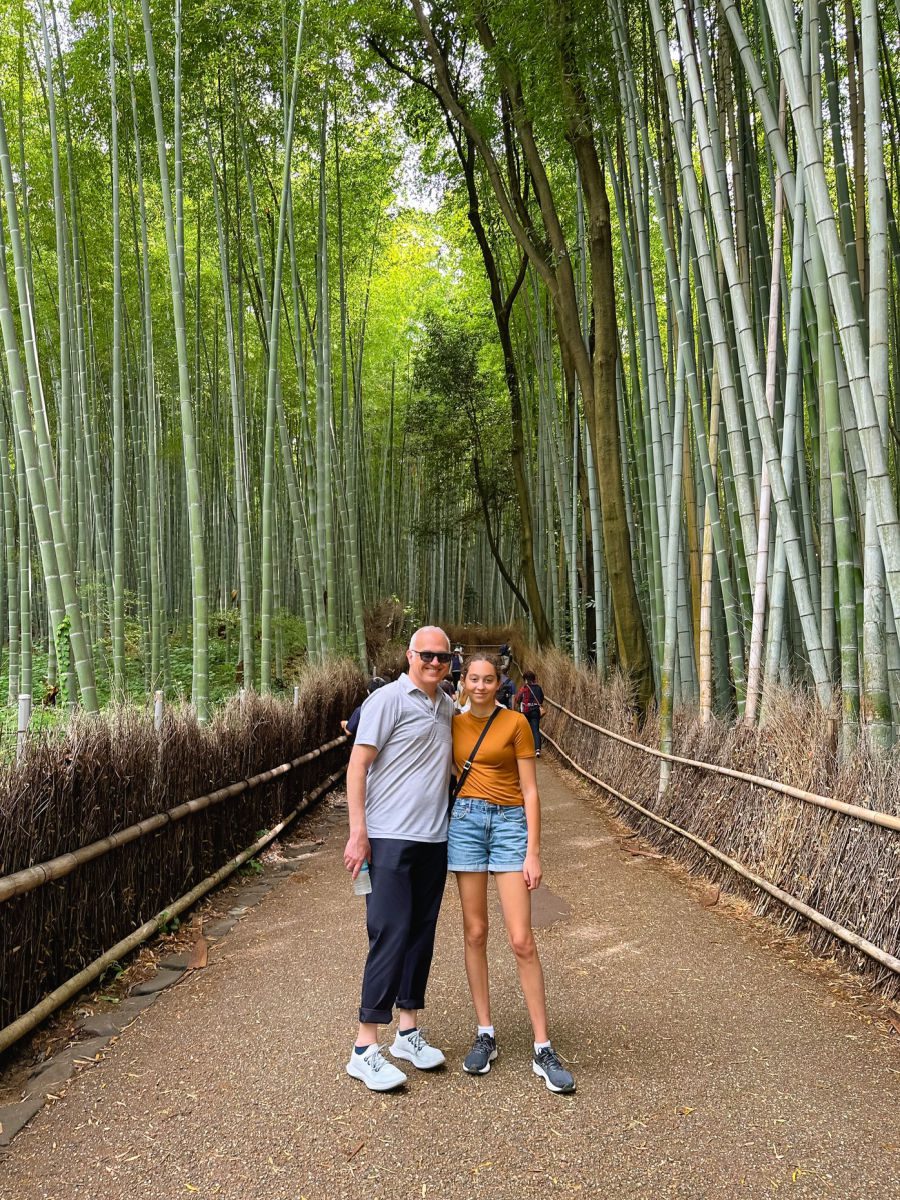
Japan Travel Tips: Before You Leave
Note: This post may contain affiliate links. If you click a link and make a purchase, I may receive a small commission. All opinions are my own.
Luckily, since Japan re-opened all COVID-related protocols have been dropped, so visiting Japan is quite easy. However, there are still a few things to do before you leave:
- Decide if you want to purchase a Japan Rail Pass for use in Japan. This pass is only available to overseas tourists and must be purchased before you leave. Keep in mind that the JR Pass is ONLY valid on JR Trains (not Metro systems or private train lines) and there are different passes offered, depending on if you are traveling just within one region or throughout multiple regions (when you need a National Pass.) In the fall of 2023, the price for a JR Pass is going up substantially, so this may no longer be the deal it used to be unless you are planning on a lot of train travel.
- Prefill all required immigration and customs information on the Visit Japan Web site before you leave so that all you need to do upon arrival is show your QR codes for each person in your party.
- If you have prescription medications, be sure to research what medications are prohibited in Japan, as many common over-the-counter medications and prescriptions are illegal in Japan.
- Book all of your accommodations well in advance, especially if you are visiting during the busy springtime Cherry Blossom Season or Golden Week in early May. Keep in mind that Japanese hotel rooms are pretty small so if you want more space you may want to spend a bit more on an American brand. You can also consider staying one to two nights in a ryokan, a traditional Japanese inn that typically features tatami-matted rooms and communal baths known as onsens. To save money, you may want to consider an Airbnb or capsule hotel.
- Book as many restaurant reservations as possible a few weeks in advance, especially if you are looking to experience some of Japan’s many renowned Michelin Star or fine dining options. Not all restaurants offer online booking but this is where a hotel concierge can help, or there are paid restaurant booking services (that I’ll discuss more below.)
- Buy timed-entry tickets to popular attractions that sell out, especially TeamLab Planets Tokyo or Sumo practice.
- Reserve a mobile WiFi hot spot that you will pick up at the airport, or look into an international eSIM provider, as this will typically be cheaper than an international data plan on most cellular carriers.
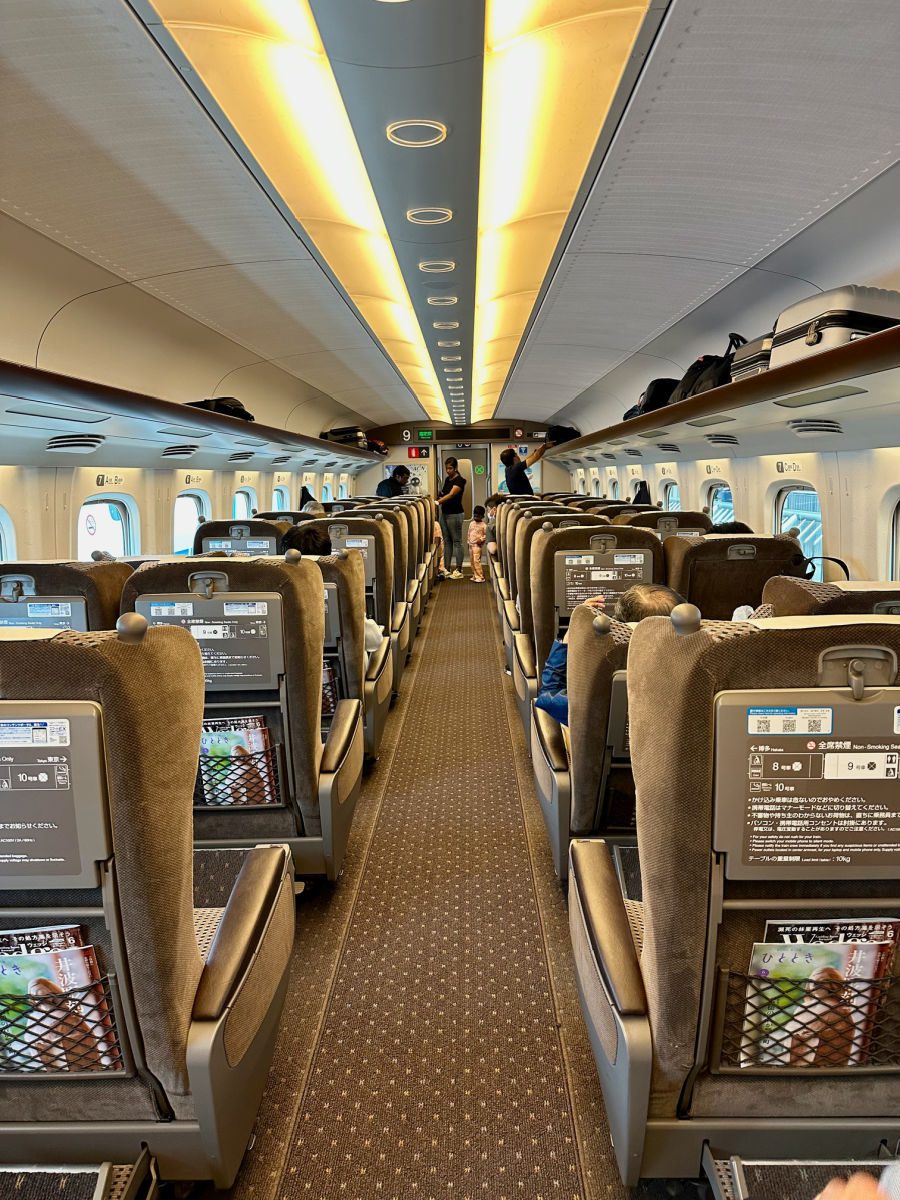
What to Do Upon Arrival
When you arrive in Japan after a long flight from the United States, you will be a bit bleary-eyed and overwhelmed, so remember to take these steps before you leave the airport:
- Hit the ATM and take out a few thousand YEN. I’d recommend taking the maximum amount to minimize fees associated with using the ATM or bank fees. Even though Japan has changed a lot in recent years, for a modern society there are still a large number of small restaurants, food stalls, and attractions that require cash.
- Stop and pick up your pocket WiFi hotspot if you have reserved it in advance and if not, there are many shops in the airport to get a hotspot or eSIM (it just might take longer to check out if you don’t reserve in advance.) Remember when you are reserving a hotspot you need to pay attention to which airport (e.g. Haneda or Narita) they are located at and you need to return to the same location to drop it off at the end of your stay or ship it back.
- If you have purchased a JR Pass, stop at the JR ticket office to exchange your voucher for your actual pass. You will need your passport and tell the ticket clerk when you want your pass to start and it will be validated from a certain date for the length of time of the pass you purchased (e.g. 7 days, 14 days, or 21 days consecutive days.)
- Depending on the JR ticket office, they may also make train reservations for you (if you purchased a pass that includes seat reservations such as a Green JR Pass.) If not, you can do this at the ticket offices in the major train stations, such as Tokyo Train Station, Shinjuku Train Station, etc.
- Look for a machine/kiosk for Welcome Suica to purchase and load an IC Card. An IC card is a preloaded payment card, like a debit card, that can be used for metro/subway fares, some private train lines, locker rentals, many vending machines, and some convenience stores. The Welcome Suica doesn’t require registration or a deposit (some cards require a 500 YEN deposit), so it is a good choice for visitors. The screen is very easy to navigate, with an English menu option, but you will need CASH to load onto your card (it seems strange but that’s the way it is.) I’d recommend starting with 3,000 YEN for a 7+ day stay. Also keep in mind that EVERY person in your party needs their own IC card to use the subway/train. The Pasmo card is another IC card option.
- Arrange a transfer to your hotel. Taxis are very expensive in Japan, especially if you are traveling all the way into center Tokyo from Narita airport. It is cheapest to use public transportation. However, another option, depending on where you are staying, is the Airport Limosuine Bus, which connects the airports with central train stations and hotels for door-to-door service. It is nice to not have to navigate the trains on your first day in Japan (when you are still tired and jetlagged.) I booked our bus in advance and gave too much time to get through customs and the other steps at the airport and had to switch to an earlier bus when I got there. You may want to just wait until you clear immigration/customs before you book your bus transfer from the desk at the airport.
- When you get to your hotel, don’t lock your passport away in your hotel safe. It is required that you carry your passport with you when you are out and about in Japan. I’d suggest keeping hard copies in a safe space in your hotel just in case it gets lost (and a picture of it on your phone.)
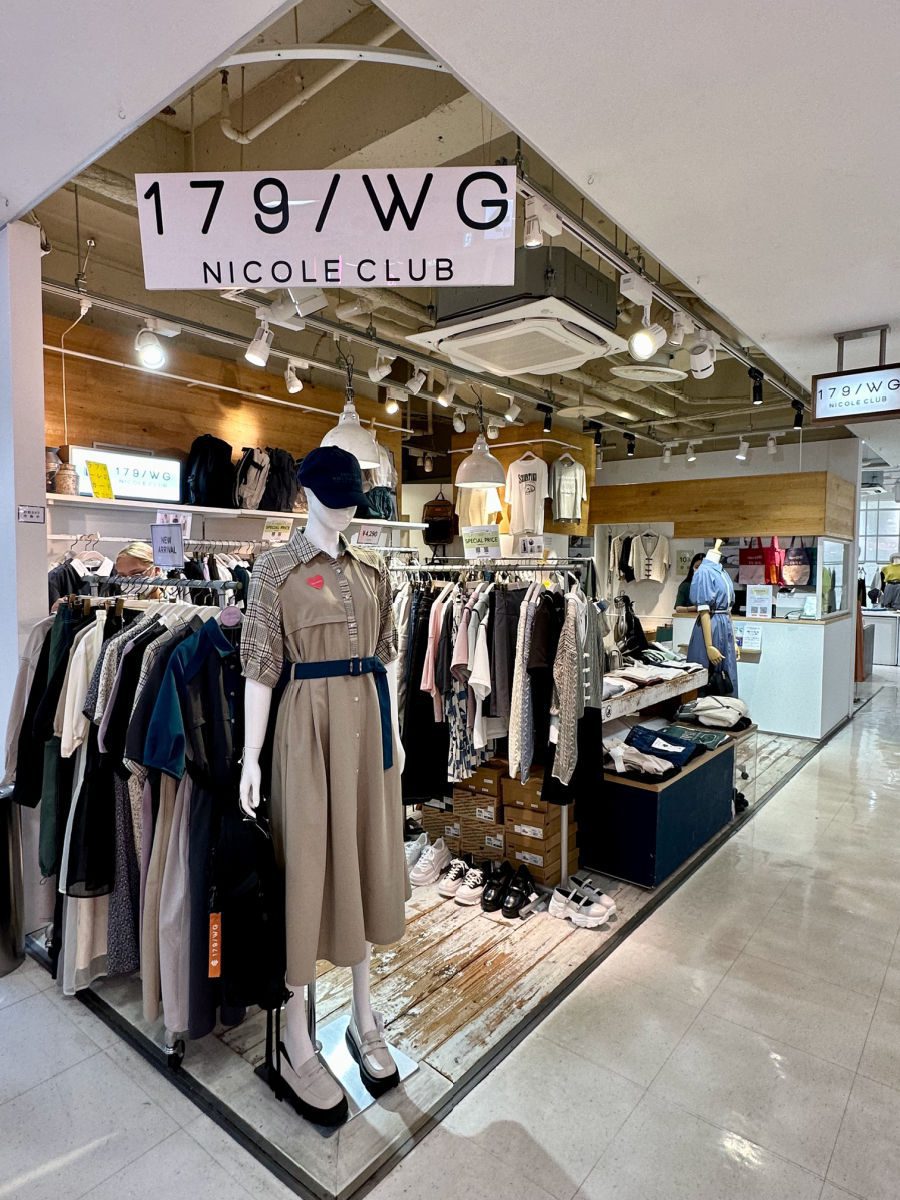
Japan Money & Shopping Tips
- The local currency is the Japanese Yen. The current exchange rate is $1.00 = ~ 142 Japanese Yen. You can check the current exchange rate using XE.com.
- Always keep some cash on you, including some change, as many businesses and attractions still do not accept credit cards. Change is used especially when visiting temples or shrines to make an offering, purchase a charm, or receive a fortune.
- While many establishments now accept credit cards, not many support Apple Pay (they have a local digital contactless payment system). You will generally need to insert your credit card and sign a receipt. Don’t be surprised when the clerk hands you both the original receipt and the credit card receipt for each transaction.
- Not many businesses accept American Express and some also don’t accept MasterCard. To be safe, carry a couple of cards and make at least one of them a Visa.
- To reduce the use of plastic, shops now charge a small amount for a shopping bag (typically about 20 Yen). To avoid this fee or excess packaging, carry a packable reusable shopping bag such as these.
- Some shops advertise Tax-Free Shopping. If you see this sign, give them your passport and they will take the tax off your purchase on-site, without any forms to drop off at the airport. This saves around 10% for purchases over a certain amount. Other shops participate in the Global Blue tax refund, but for those you will need to fill out paperwork and bring it to a Global Blue location at the airport or in the shopping center with the goods you purchased.
- Tipping is NOT customary in Japan. Honestly, after the creep of the tipping culture in the U.S. in the last few years, it is such a pleasure to not tip in Japan and to know it is not expected. Some restaurants may charge a cover charge but that is it.
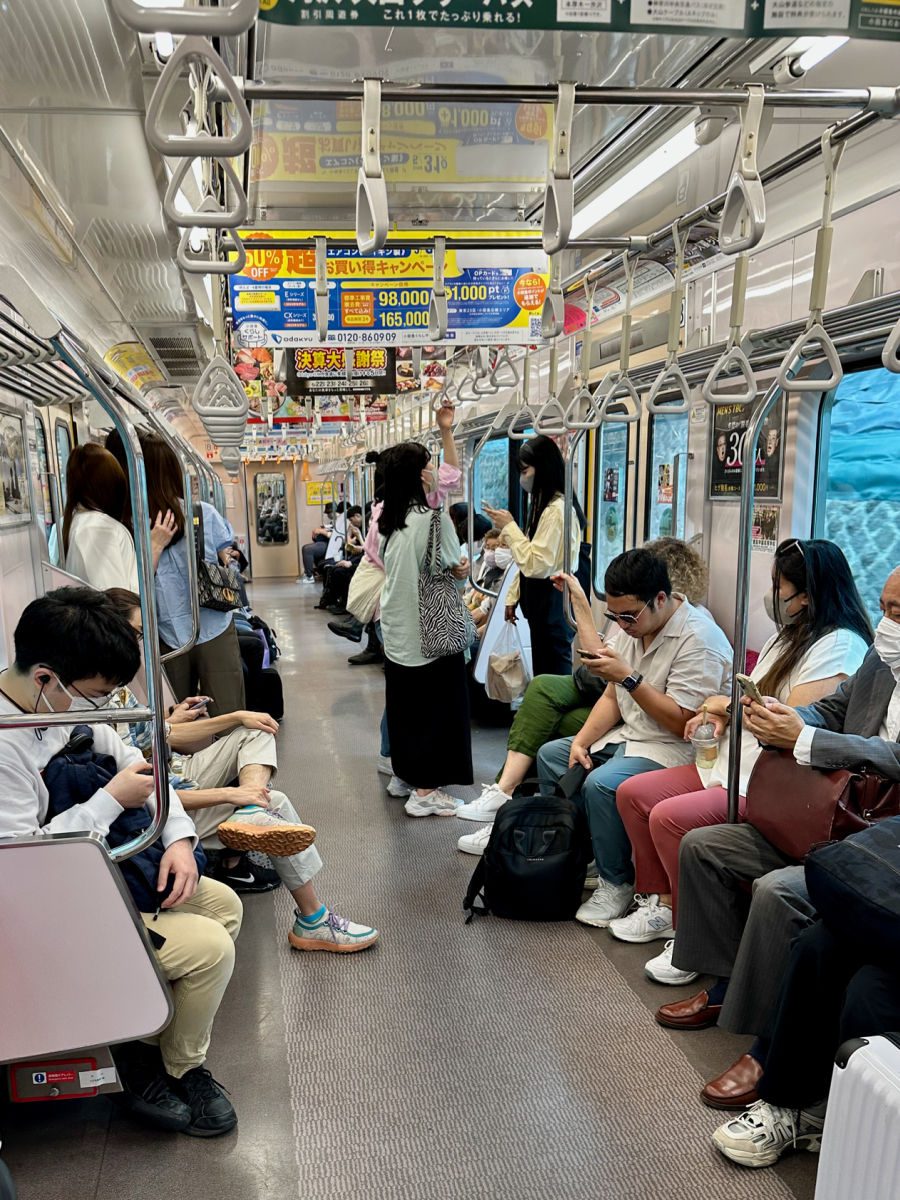
Tips for Getting Around Japan
Getting around Japan is very easy with its efficient and usually prompt train and public transportation system. However, there are a few things that will make getting around the cities a little easier:
- Travel between cities is easiest using the Shinkansen bullet train. Just keep in mind that the fastest bullet trains, the Nozomi and Mizuho Shinkansen trains, are not included in the JR Pass.
- If you take the Shinkansen from Tokyo to Kyoto, try to get a seat on the right hand side of the train and on a clear day, you will get a great view of Mount Fuji.
- Most trains do not require reservations, but purchasing a ticket with a reserved seat or a JR Pass that includes reservations, is much more pleasant as you know you will have a seat, even on busy trains. The platform will indicate which train cars are reserved versus non-reserved.
- Beginning in the spring of 2023, you need a luggage reservation when bringing large checked bags onto a Shinkansen train. Keep in mind that there is very limited luggage rack space and otherwise only the seats in the last row also offer a luggage reservation in the space behind the seats. If you plan on bringing your bags on the train, I recommend stopping at the JR ticket office in one of the large train stations and getting help reserving seats and luggage spaces.
- Smaller carry-on size bags can fit on the rack over the seats. Just keep in mind that bringing any bags through the metro at rush hour is near impossible on the busy lines.
- You may want to consider shipping your luggage ahead to your next hotel. Depending on the location and season, this can typically be done in 24 hours, so that you can travel with just a backpack or small bag with your things and reunite with your luggage at your next hotel or the shipping office in the next city. Most of the hotels will arrange for your luggage shipping at the concierge or bell desk. However, if you are staying at an Airbnb, you can look into using a shipper such as Yamato Transport. We did this between Tokyo and Kyoto and Kyoto and Osaka and it made getting around so much easier. It cost less than $20 per bag for our ~50 lb. checked-luggage sized bags.
- In most cities, in addition to Japan Rail (JR) trains, there are also private trains and local metro or subway systems. Google Maps is extremely helpful in determining the best route, but you may want to do a little more research if you are trying to use JR trains. The route search on the official Japan Travel App from the Japan National Tourism Organization or the Japan Travel app from Navitime are helpful if you want to find the best routes for specific types of tourist passes.
- To use your JR Pass, simply insert your JR Pass at the turnstile and take it back after you walk through. You will need to do the same when you exit the station.
- If you are using your IC Card, tap the card at the turnstile when you enter the station and tap again when you exit. Keep an eye on your balance. Most stations have machines where you can easily reload your IC card (with an English menu.)
- If you have any trouble, the staff at the train stations are very helpful in providing directions.
- When it comes to using the trains and subways, Google Maps offers invaluable information regarding which platform the train will be on, when it is leaving (and when the next trains are expected), what car is best to board if you are transferring, the length of the trip and the number of stops, the stop name, the cost with an IC Card, and the best exit to use at the train station (trust me that this is so, so helpful.)
- On trains and subways in major cities, all the train signage both on the platform and in the train cars, is offered in Japanese and English, as are the announcements on the train letting you know the next stop, etc.
- Once you are on the train platform, you will need to line up behind the yellow line at one of the spots indicated by a number that corresponds with the car number. In Japan, it is customary to line up single file.
- When the train arrives, let those exiting to get off the train before boarding.
- Note that on some trains, certain cars indicated with pink on the platform are for women only during certain hours.
- The only time you might see pushing in Japan is people squeezing themselves onto a subway train. Rush hour on certain lines such as the Maranouchi line in the Tokyo Metro that goes through Shinjuku station, which is the busiest station in the world they claim, is an absolute crush and best to avoid, especially with small children.
- Once on the train, follow the local customs and silence your phone and if you talk, do so quietly. The trains and subways in Japan are very quiet and surprisingly clean. People do not talk or eat on the train. Many nap, others read or play games. I saw plenty of people reading manga comics on their phones and even one guy reading sheet music for “Moon River.”
- Note that while walking through busy train stations and on the street, people typically walk on the left. Except in Osaka, where it is customary to walk on the right. Many stations have arrows on the floors.
- On escalators, stand on the left to let those in a rush go by on the right. Except in Osaka, then stand on the right.
- If you are using a maps app for walking directions and you are using a mobile hotspot, we found Apple Maps to offer better turn-by-turn walking directions that were easier to follow. The arrow on Google Maps used to indicate your location would often spin in a confusing way and it wasn’t as clear about when to go up steps, across bridges, etc.
- Most train stations offer lockers if you want to store your belongings and go out and explore. There are small, medium and large lockers and the medium and large will fit a suitcase or multiple smaller bags. The price ranges from 300 to 500 Yen.
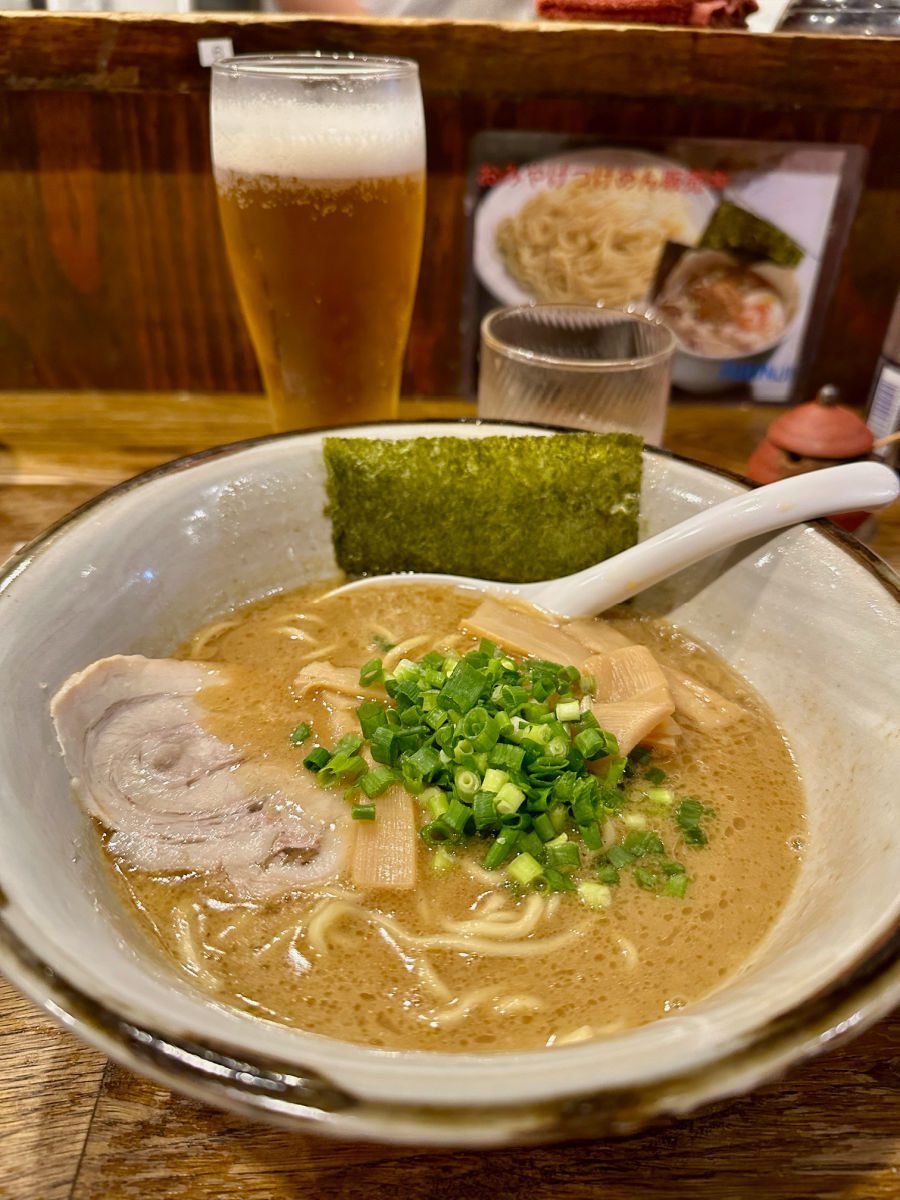
Japanese Food & Restaurant Tips
Japanese cuisine is incredible and no, you don’t have to eat sushi every day. Each shop specializes in a specific dish and does it well. You will eat ramen, soba noodles, tempura, shabu shabu, street food, sushi, and so much more. There are a few things to keep in mind when visiting restaurants though, including:
- Japanese people love to line up for good food. There are many small restaurants with less than a dozen seats and people will line up for two hours or more to eat there. It is hard to do this as a tourist who is tired from walking and doesn’t want to spend precious vacation time in line. But it is part of the experience. Also, this is most common at the cheaper places. If you want to spend more, it is easier to get a reservation. If a restaurant opens at 5:00 pm, expect a line to start forming by 4:30 pm if not earlier.
- Luckily, these restaurants turn over seats very quickly as people are encouraged to eat and go. Japan is not a place where people linger over meals. They eat quickly and quietly and leave.
- You will find a wealth of inexpensive restaurants in Japan. However, you will also find a large number of very expensive (e.g. $200-500 per person) restaurants. Unfortunately, there isn’t a lot in the middle. So it is either get in line and eat cheap or make a reservation and spend an arm and a leg (there are exceptions of course.)
- If you want to try a special restaurant, there are number of restaurant reservation services that will help you make reservations. Trust me that many book up weeks in advance and even if you set an alert to make a reservation when they open the calendar, you may still miss it. Some of these services include: Pocket Concierge, Omakase, JPneazy.com, MyConcierge Japan, Table All, and Table Check.
- Keiseki is a traditional Japanese meal with multiple small courses. These are typically served at ryokans and traditional tea houses.
- Omakase is chef’s choice sushi, which is typically offered at different levels or numbers of pieces with different price points.
- It is impolite to be loud in restaurants, but slurping in a noodle place is accepted and expected.
- Each restaurant will provide either a hot towel (washcloth) or a disposable wet towel to clean your hands before eating. However, what we consider napkins or serviettes are not provided.
- Do not rub your chopsticks together in Japan, it is considered rude. Likewise, don’t stab with your chopsticks and don’t rest them on your bowl.
- To reduce waste, bring your own reusable chopstick set. I saw someone with these on our last day of our trip and I really wish I had thought of it sooner.
- You don’t dip your sushi in soy sauce in Japan as the chef prepares it as it should be eaten.
- Don’t walk and eat in Japan. If you purchase food at a convenience store or food stall, you can eat out front and then bring them back the trash.
- Garbage cans are very scarce in Japan!! Be prepared to carry around your trash until you find a bin (typically at the train station.) But don’t worry, the streets in Japan are very clean. Littering is not part of the culture.
- You will find vending machines everywhere selling various drinks and many take the IC card for payment, although some require cash or other digital payment systems.
- Unfortunately, there are not many public bottle refill stations or drinking fountains.
- Avoid eating on the metro or local trains, but it is acceptable to eat on the longer, Shinkansen trains, and there are many shops in the train station selling bento boxes that are packaged perfectly for this purpose.
- Many higher end restaurants speak English. However, many others offer either an English menu or a menu with pictures. At others, you order from a vending machine with photos. This can be a little tricky to understand but generally just select the photo of the item you want to order, insert your cash, take your ticket and hand that to someone behind the counter.
- Google Translate with the camera function / Google Lens can be very helpful for menu translation. I’d recommend downloading the Japanese dictionary for offline use.
- Some restaurants offer a tablet at the table for ordering or a button to call the server to place an order.
- At many restaurants, you take the bill to the front to pay at the cashier.
- Don’t leave your chopsticks sticking upright in a bowl of rice (this is a funeral ritual).
- When receiving a drink, cup it with two hands to show gratitude.
- Japanese convenience stores such as 7 Eleven, Lawsons, and Family Mart all offer surprisingly good food, which is an inexpensive way to eat while in Japan.
- Many department stores also have a floor with food stalls that offer prepared foods to purchase and bring home to eat including bento boxes, sweets, and other foods that can be reheated easily.
- Taking a food tour is a great way to learn about the local cuisine. We took a food tour in Osaka with Arigato Travel and definitely recommend them.
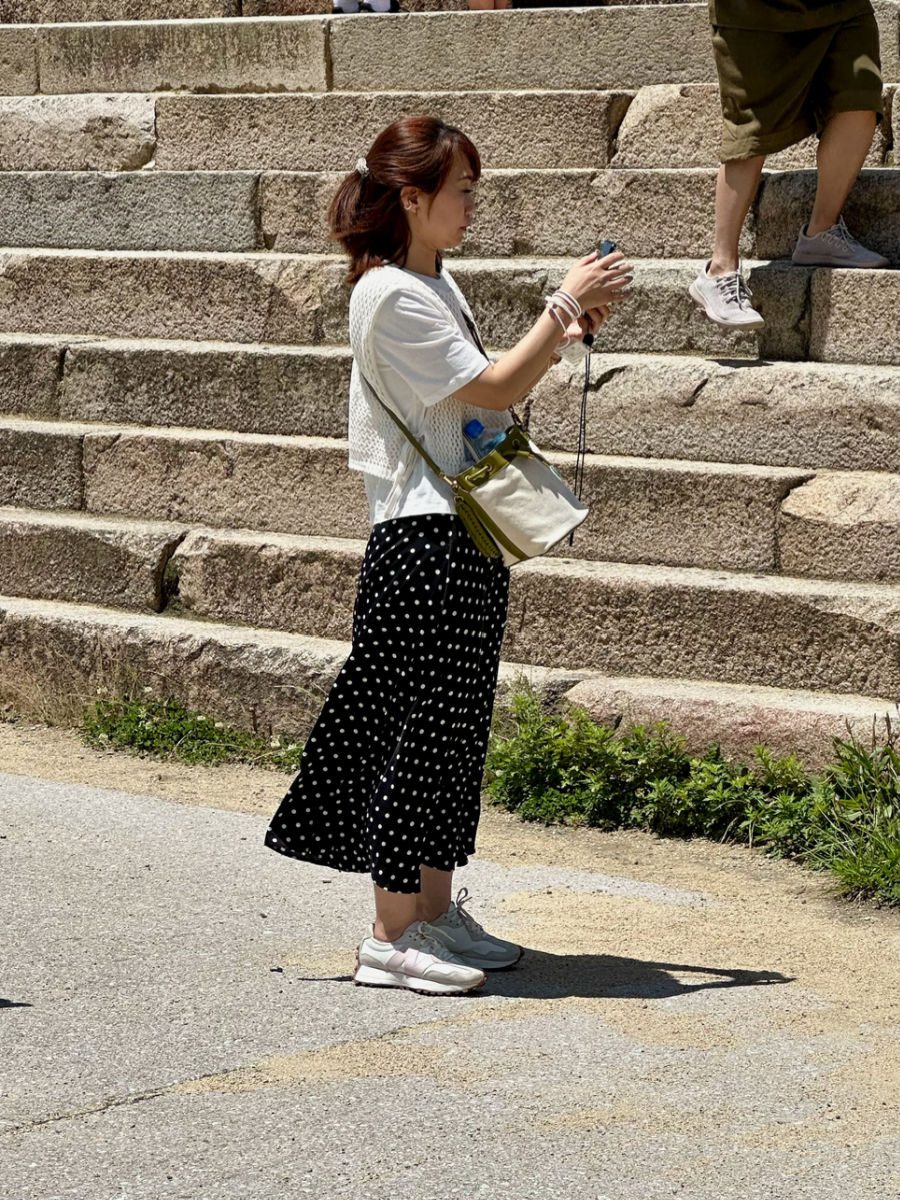
What to Wear in Japan
Japan is a fairly conservative society when it comes to dress, with the exception of the “kawaii culture” amongst the youth. To fit in and show the proper respect, it is important to keep a few tips in mind:
- When visiting temples and shrines, it is appropriate to make sure the knees and shoulders are covered, although it isn’t policed as strictly as some churches in Italy.
- Shorts are rarely worn by locals. You are more apt to see shorts on international tourists in Kyoto than in the big working cities like Tokyo.
- Women wear a lot of loose fitting, wide leg pants and long skirts, paired with a t-shirt under a sweater or flowy button-up shirt or light jacket.
- Men are often in suits or business attire, or slacks and a golf shirt. Younger teen boys will likely wear jeans and t-shirts.
- If you are visiting temples and shrines, or traditional restaurants, it is helpful to wear shoes that can easily be slipped off, as required upon entry.
- When visiting Japan, it is important to wear comfortable shoes, as you will do a lot of walking.
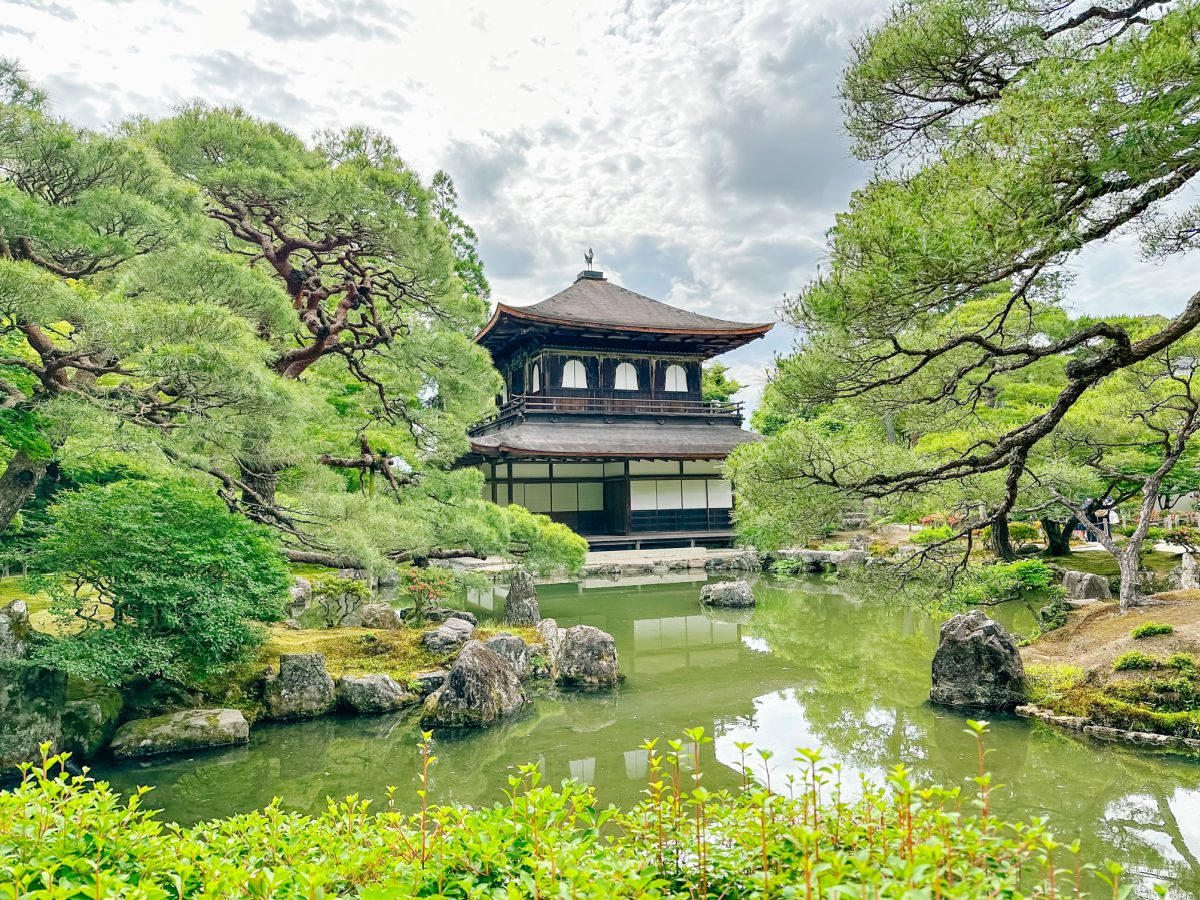
Japanese Culture Tips
The Japanese culture values politeness, cleanliness, order, following the rules, and beautiful presentation. You will see these reflected during your visit and it is important to show respect by observing cultural norms.
- It is very appreciated if you can learn a few phrases in Japanese including:
- Konnichiwa – hello
- Arigatou gozaimasu – thank you very much
- Sumimasen – excuse me
- Dō itashimashite – you’re welcome
- Hai – yes
- Lie – no
- Gomen’nasai – I’m sorry
- Ohayō – good morning
- Konbanwa – good evening
- O-yasumi nasai – good night
- Japanese packaging may seem excessive or wasteful, but it is very culturally important to present things beautifully. Your purchases will be wrapped and bags sealed with stickers to keep them closed. If you purchase a pastry at a shop, it is often individually boxed with small ice packs to keep it fresh until you can enjoy it at home.
- If you are invited to someone’s home, remember to bring a gift that is nicely packaged.
- A slight bow is a show of respect when meeting someone or thanking them.
- If someone hands you a business card or a gift, except it with two hands and a slight bow.
- Do not blow your nose in public.
- Wear a face mask if you aren’t feeling well.
- Wait to cross the street only when the light is green, even if no one is coming.
- Be on time!! No one is late in Japan, they are usually early. On one tour, our tour guide was being generous by agreeing to wait until 2 minutes after the meeting time for someone that hadn’t yet showed up.
- In Japan, Buddhist temples and Shinto shrines often sit side by side. When visiting, remember to remove your shoes before entering the inside of a temple or shrine (there are usually cubbies provided). At a shinto shrine, it is appropriate to wash your hands first. If you want to offer a prayer, first you bow, then give an offering of small change, bow deeply twice, ring the bell, clap twice, offer your prayer, then bow once more. See a full description of temple and shrine etiquette.
- Remove your shoes when entering a shrine, temple, restaurant with tatami mats, or someone’s home.
- In Japan, public restrooms are widely available and they are very clean. Japanese toilets are also the best, offering features like heated seats, privacy sounds, and washing options. Many public restrooms also offer baby seats in some stalls, along with family bathrooms, changing tables, and nursing rooms.
- Japan is one of the safest countries to visit and even if you are traveling solo, you will feel very comfortable walking around even at night.
I hope these Japan travel tips are helpful. As a travel blogger, I have visited many countries but I found Japan one of the safest, most comfortable, and most orderly place I have been to. It suited my type A personality perfectly and I loved the blend of ultra modern and traditional culture.
Save this to Pinterest
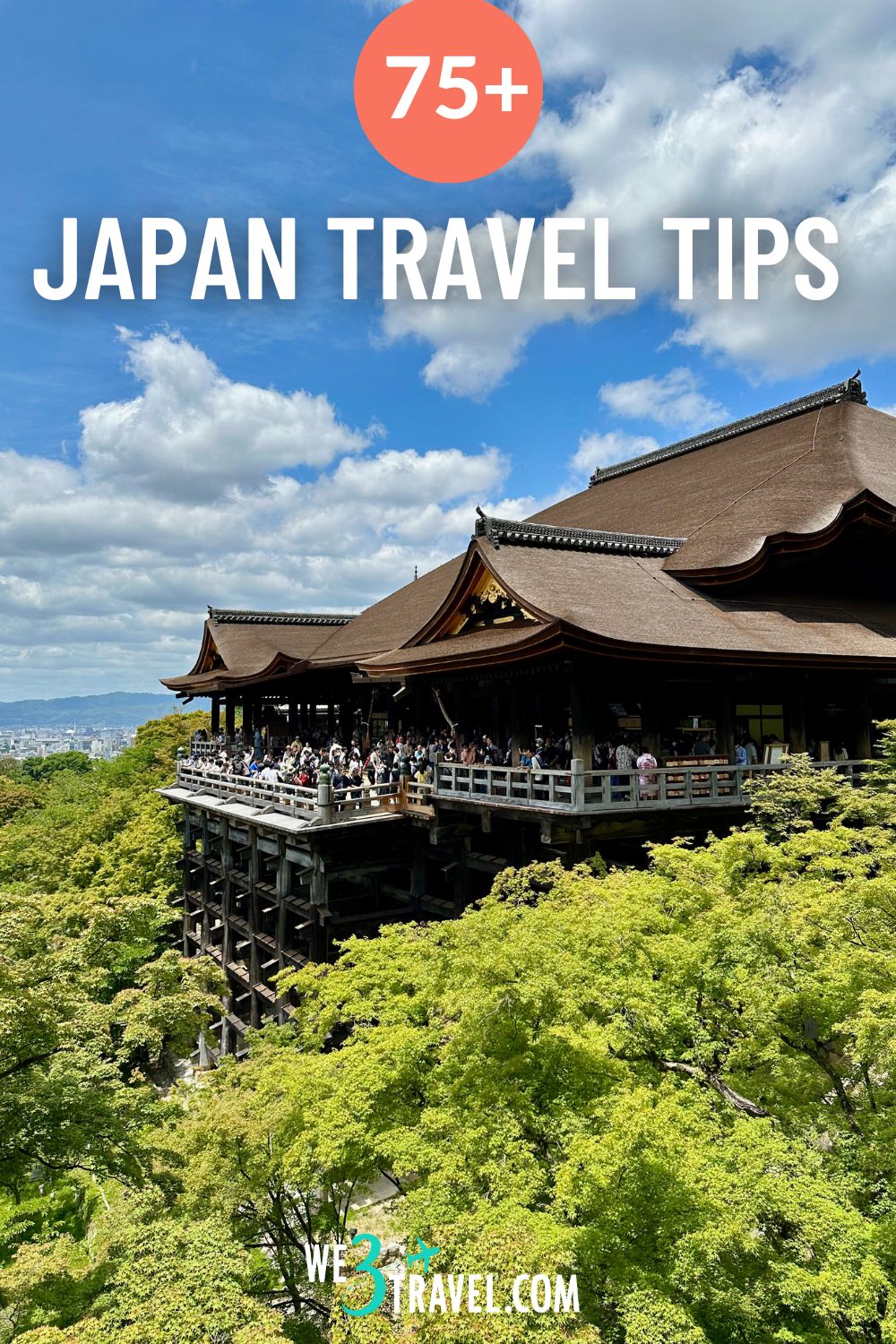
The post 75+ Japan Travel Tips for 1st Time Visitors from the USA (2023) appeared first on We3Travel.